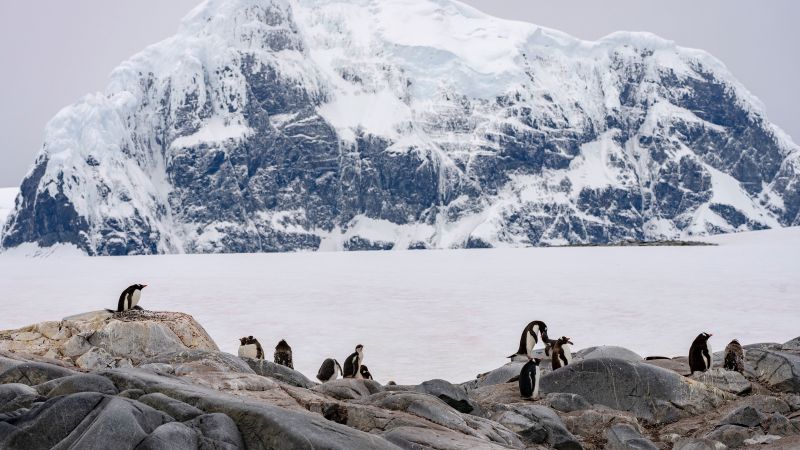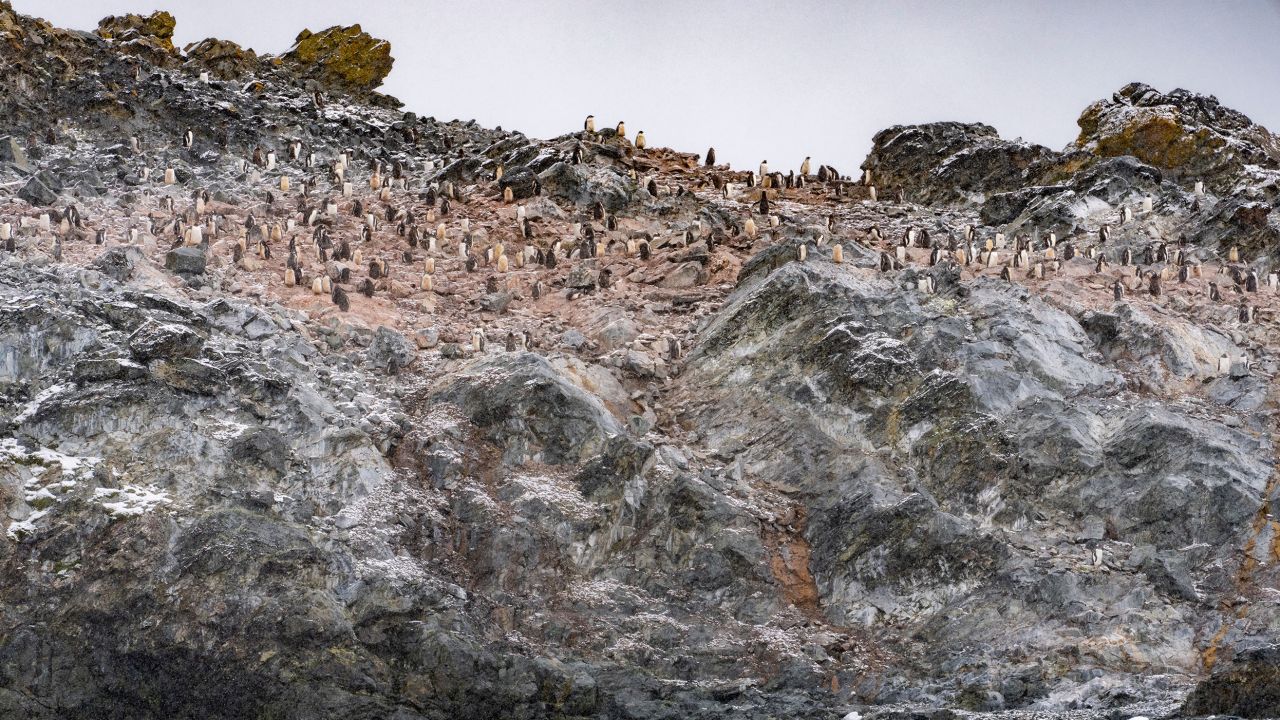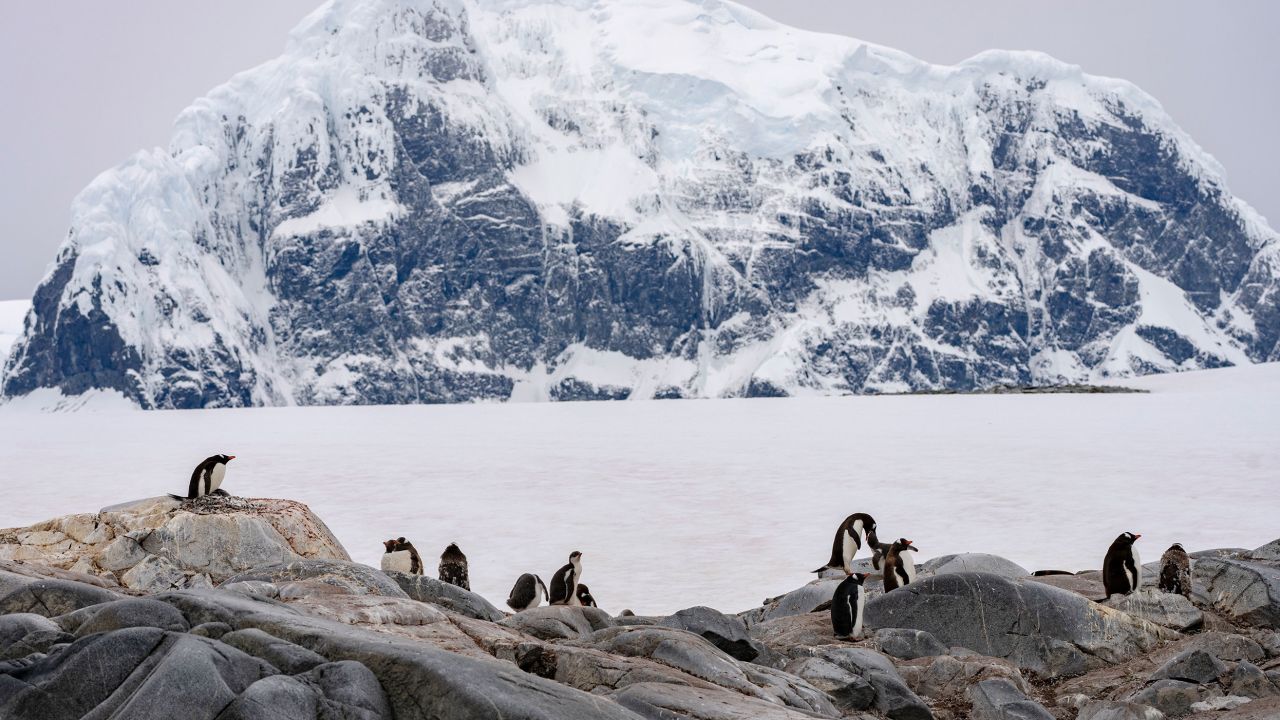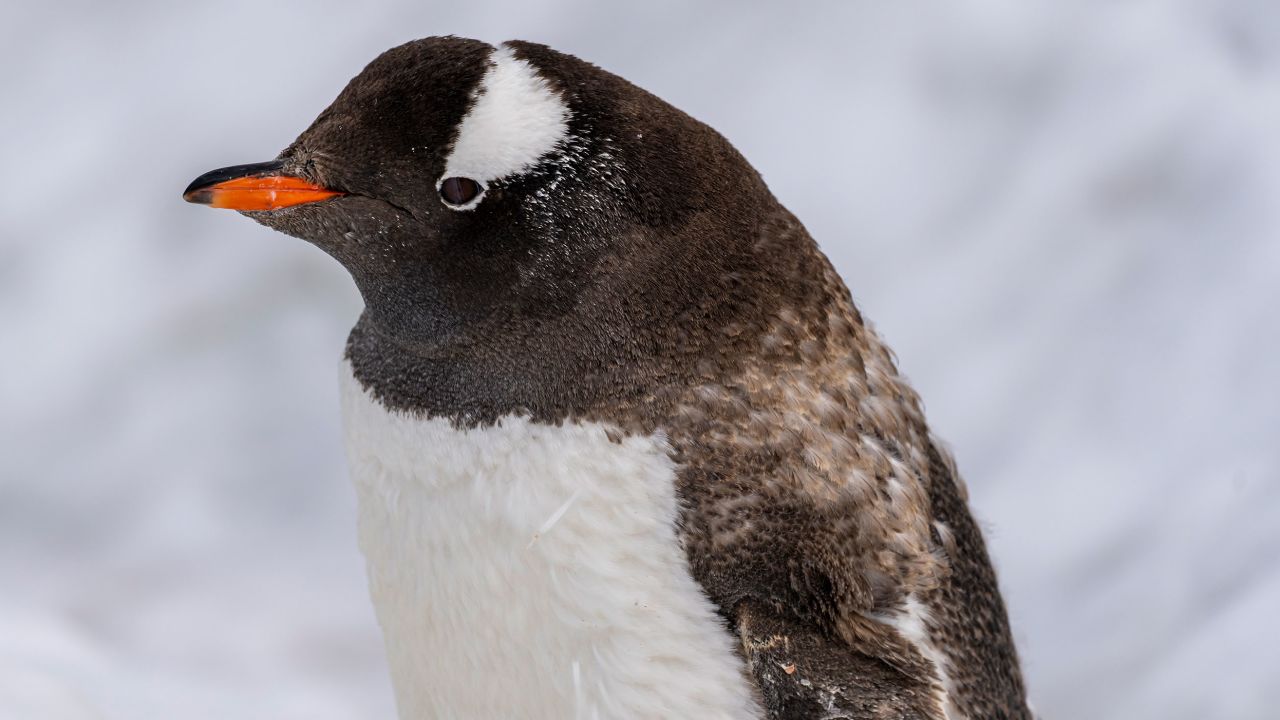
CNN
—
One hundred years ago, colorful canaries warned humans of the hidden hazards of digging for coal by riding shotgun down the mine and dropping dead.
Now, penguin experts say these birds that move like tuxedoed toddlers are showing us the hidden hazards of burning coal and other fossil fuels by the way they march. And as global warming changes the survival-of-the-fittest game at the bottom of the world, one particular species of Antarctic penguin is modeling a poignant lesson for humanity:
Adapt or die…and make it quick.
With numbers in the millions, Antarctica’s six species of waddling aquabats are far from extinction and as I stepped foot on the Antarctic peninsula in early March, and drank in the wildest place I’ve ever seen, there were hundreds there to make an adorable first impression. Colonies were brimming with life.
But then I learned how the Southern Ocean warmed by the climate crisis is turning my little boy’s favorite bird into a sentinel species of the Anthropocene. While some are abandoning nesting sites where chicks have been hatching for thousands of years to find better ground, colonies of those that refuse to move have collapsed.

“It is incredible,” Heather Lynch, the Endowed Chair for Ecology and Evolution at Stony Brook University told CNN. “As ecologists, we know that animals shift their range over geologic times, they disappear in one area and colonize new areas. But it’s rare to see those dynamics happening over the course of one’s career.”
Along with seals, seabirds and baleen whales, penguins gorge mainly on Antarctic krill, a shrimp-like crustacean that thrives on the kind of phytoplankton found under sea ice.
Unlike the Arctic, where sea ice has declined consistently, Antarctic sea ice has swung up and down – although recently scientists have seen a steep downwards trend.
At the end of the Southern Hemisphere winter in September 2014, there were more than 7.7 million square miles of frozen saltwater floating around Antarctica – a record high – and many species like humpback whales were feasting on krill and thriving.
But early this year, sea ice reached a record-shattering low of less than 700,000 square miles, breaking the previous record set just last year.
“If we have a 1 degree [Celsius] temperature change in a temperate environment such as the UK or the US, who cares?” Tom Hart, biology lecturer at Oxford Brookes University explained. “Doesn’t ruin your day. But down there, 1 degree makes a huge difference – whether you can stand on water or sink into it. Or whether there’s snow cover on a breeding site or not. It’s a completely different habitat.”
Using satellites, camera traps, citizen science and AI computing to keep tabs on millions of penguins around Antarctica, Hart and Lynch say they are watching a real-time lesson in evolution and adaptation.
While Adélie and chinstrap penguins remain stuck in their ancient ways come hell or warm water, the much more flexible gentoo penguins are ranging further and further south. And as they show willingness to chase new prey or abandon a nest to increase the odds of long-term survival, their numbers are exploding.
“Gentoo penguins are big climate change winners in the Antarctic,” Lynch said, confirming reports that some colonies in some parts have grown by 30,000%. “They are perfectly happy to take advantage of a warming Antarctic. They don’t mind that it’s getting wetter. The flip side of that is that the Adélie and chinstrap populations have cratered in many areas and particularly chinstrap penguins. Their populations have declined in some areas by as much as 80%.”


“Adaptation means several things,” Hart said. “It means being really tough in a hard environment but it also means reading the room on seasonality. It means averaging, so if you don’t do well one year, you’ve got to do better. And then you really only have to do well one year in three.”
“I think there’s a lesson in here for us as well,” Lynch said. “If we just stick to what we’ve always done, it’s not going to turn out well for us. Just because Manhattan has always been where it is, does it make sense that it will be there in 200 or 300 years? I don’t know. But I think we would benefit from being plastic and flexible and adaptive. And I think that’s kind of what the gentoos are telling us.”
Along with the worry that a crash in krill could follow the crash in ice, avian flu is now present in Chile and Argentina and Hart predicts it could migrate with seabirds to the Antarctic Peninsula next spring and devastate penguin colonies. “I think we’re in for a horrible year next year,” he told me. “But we won’t know until it happens.”
These cascading threats also make gentoos an example of what humans in the world of terrifying UN climate reports call the “hard” and “soft” limits of adaptation. If political or financial hurdles block an available strategy, it’s considered a soft limit. But if the physical changes are too sudden and severe, there is a hard limit to finding any fix at all.
As I saw during the expedition in early March, even the roll-with-the-punches gentoos are struggling after a warmer, wetter Antarctic created snow and rain events freakish enough to delay this year’s penguin nesting season by a month.
We watched with grim resignation as gentoo couples gathered rocks for worthless nests and mothers hatched chicks that simply won’t have enough time to grow the feathers and fat needed to survive winter. But Lynch reminded me that was one colony on one island, and so far, what doesn’t kill a gentoo only makes it tougher. If they changed neighborhoods so easily, she believes, they’ll just shift the timing of their baby-making season.
“I think that if there was a permanent shift towards a snowy year climate, gentoo penguins would probably start breeding earlier,” she said. “I think the gentoos are going to be just fine.”